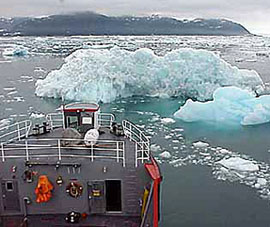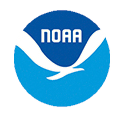Observers' Guide to Sea Ice

This is the online version of a job aid designed for volunteers who report aerial, shipboard, or shoreline observations of ice conditions at sea to authorities such as the National Weather Service, National Ice Center, U.S. Coast Guard, pilots associations, port authorities, or other maritime interests. In the job aid, emphasis is on conditions of concern to mariners with regard to safe passage of ships.
View and Print the Job Aid: Observers' Guide to Sea Ice [PDF, 2.7 MB]
Order a Copy: We're sorry, but bound copies of the job aid are no longer being produced.
More Information about Sea Ice
Ship-based Sea and Lake Ice Observing: Ships operating in areas with ice are expected to report conditions as part of standard weather reporting procedures. This 2.5-hour lesson, produced by The COMET® Program, begins with background information on ice, addressing such topics as where it is found, how it develops, and how to observe and report it. The lesson’s scenarios simulate the experience of being an ice observer in four situations and locations.
Sea Ice: A resource of the National Snow and Ice Data Center that outlines what sea ice is, where it occurs, and the differences between Arctic and Antarctic sea ice.
Shrinking Sea Ice: Watch this three-part video series from NOAA's Ocean Today about the role of ice in our ocean:
- What is sea ice and why is it shrinking? (The Role of Ice in the Ocean: Part I) (video, 2:09 minutes)
- How do we measure ice? (The Role of Ice in the Ocean: Part II) (video, 2:26 minutes)
- Shrinking Ice: Impacts (The Role of Ice in the Ocean: Part III) (video, 2:26 minutes)
Marine Ice Atlas for Cook Inlet, Alaska [PDF]: A compilation of previously published and unpublished information on the climatic, meteorological, oceanographic, and hydrodynamic conditions that influence the marine ice cover in Cook Inlet. Published by the U.S. Army Cold Regions Research and Engineering Laboratory (CRREL).
More Information about Job Aids
Job Aids for Spill Response: Learn more about the job aids that OR&R has created to help oil spill responders complete their response tasks.
Questions: Contact us with any questions, comments, or suggestions related to NOAA Job Aids.
 An official website of the United States government.
An official website of the United States government. 